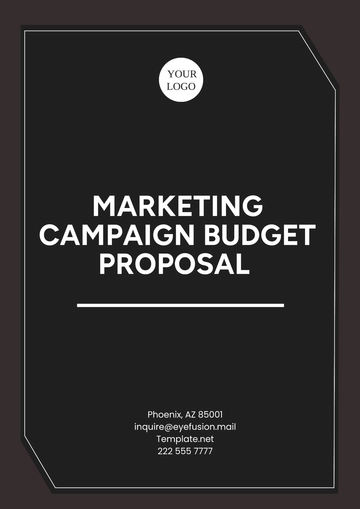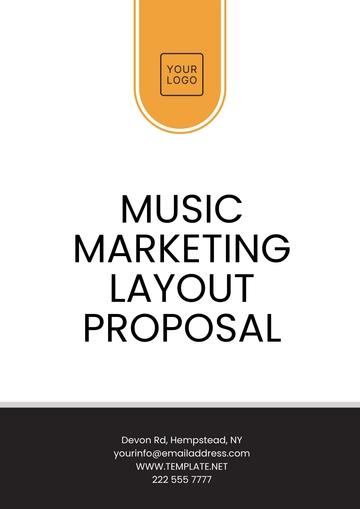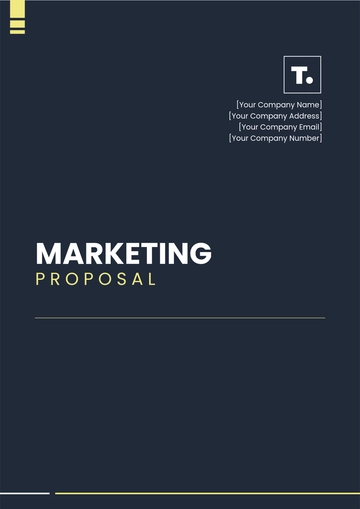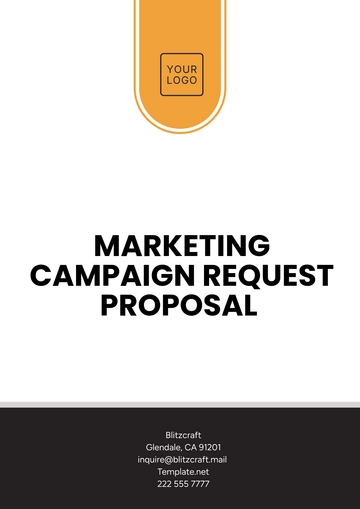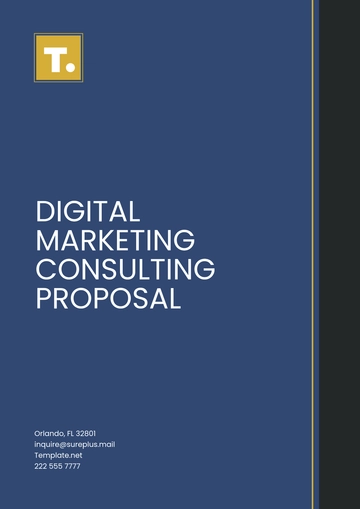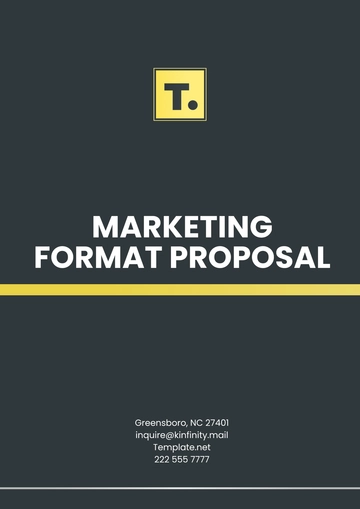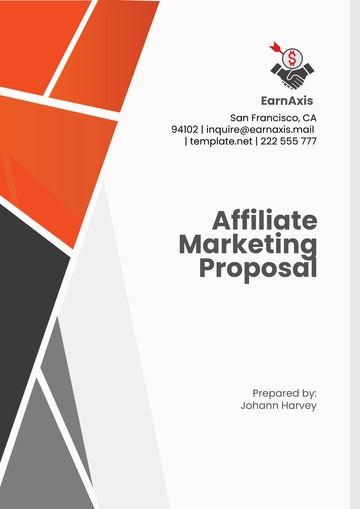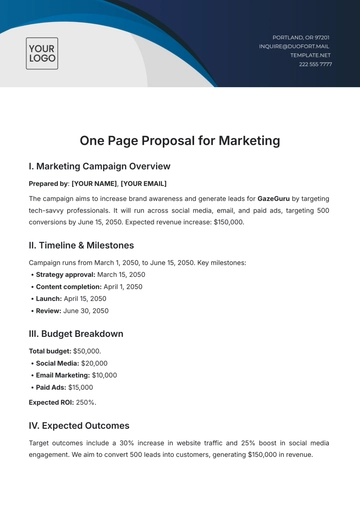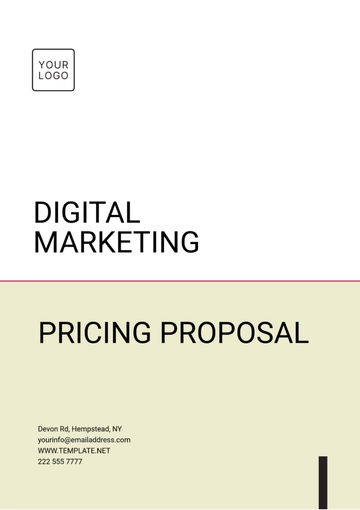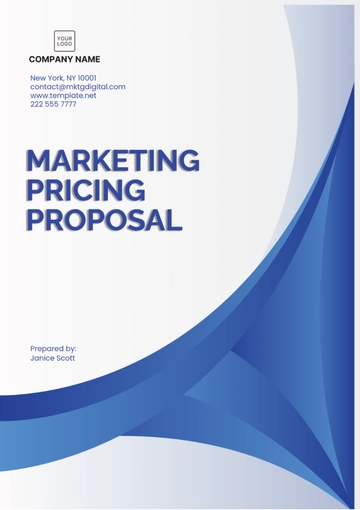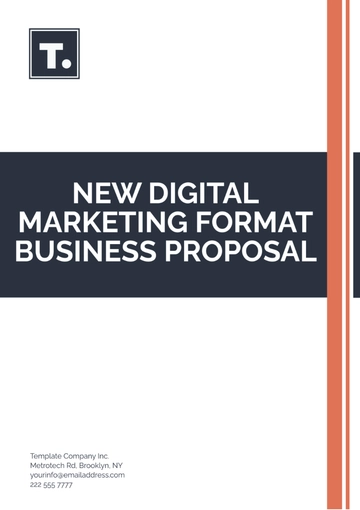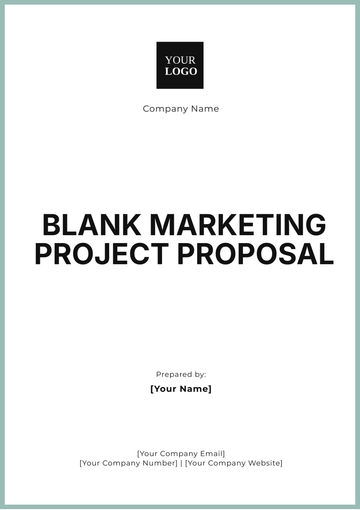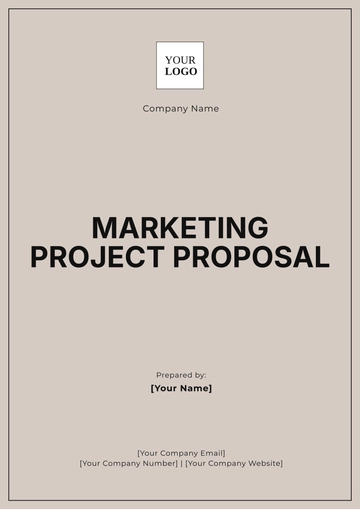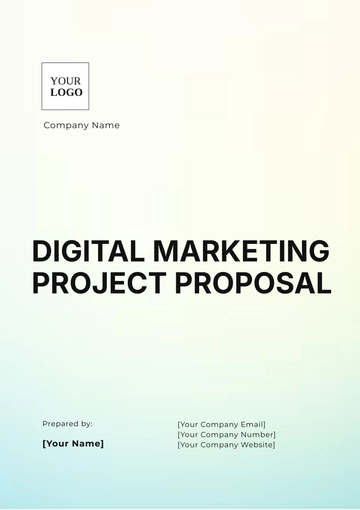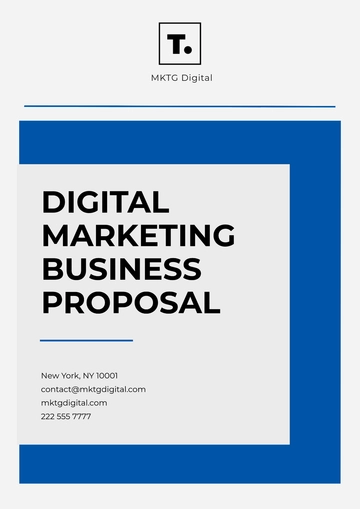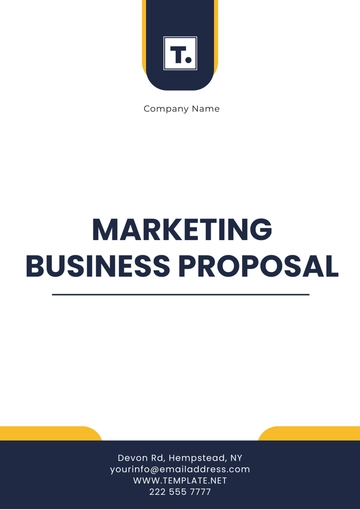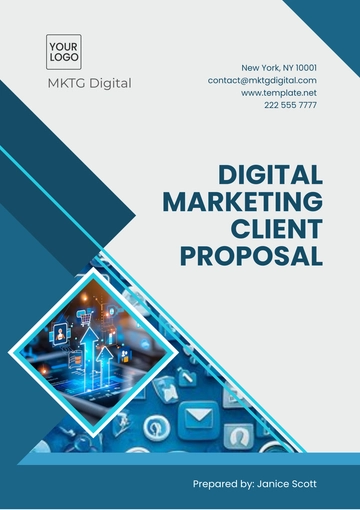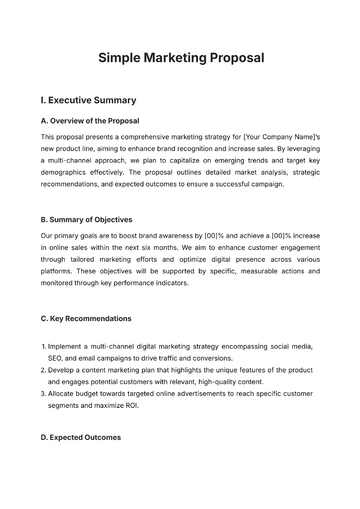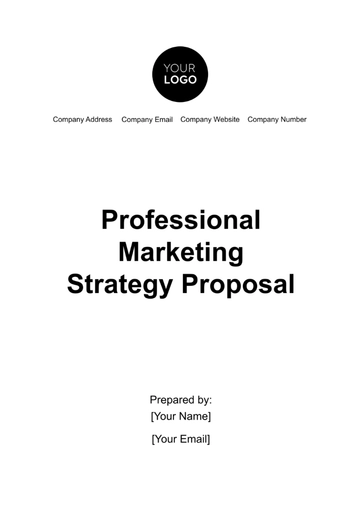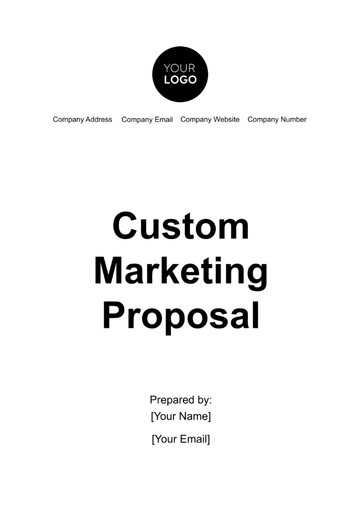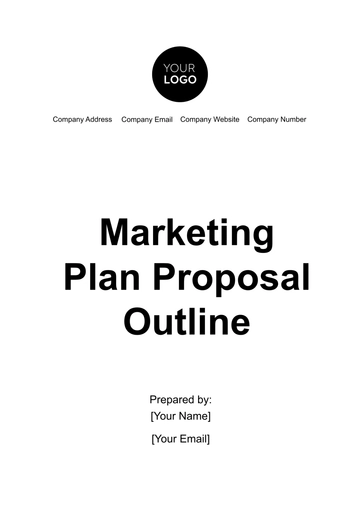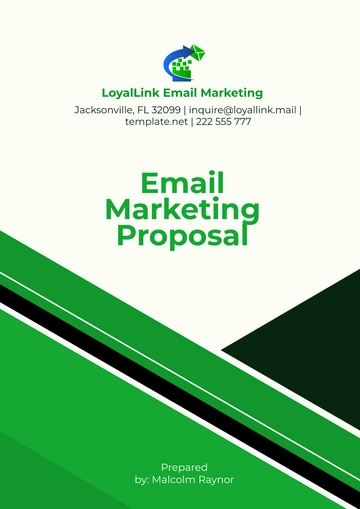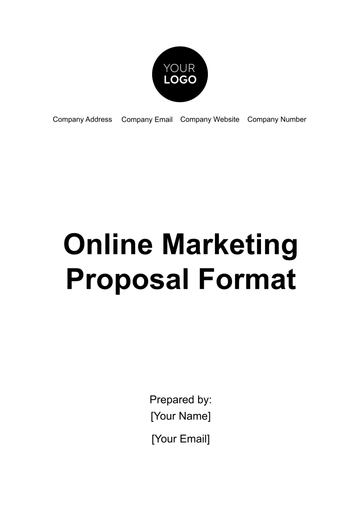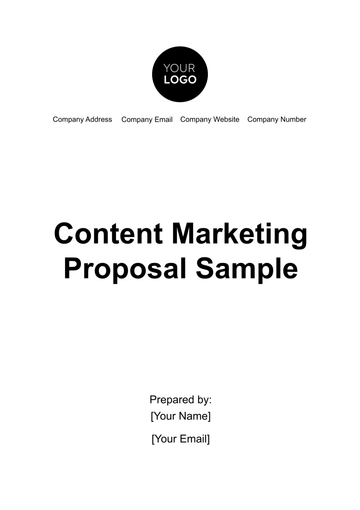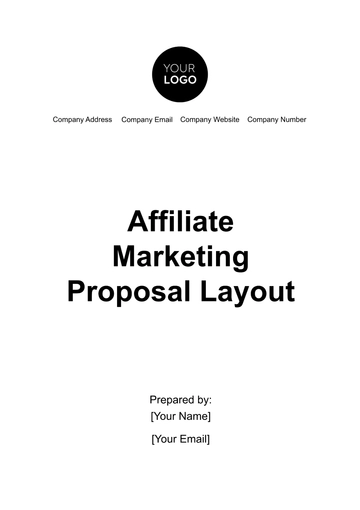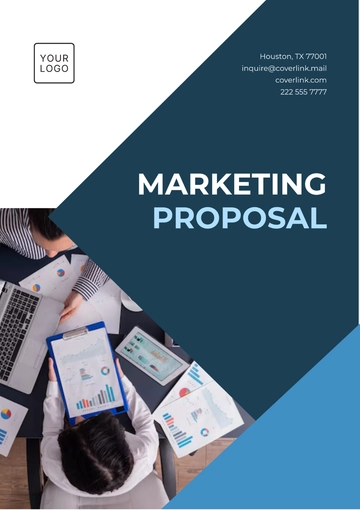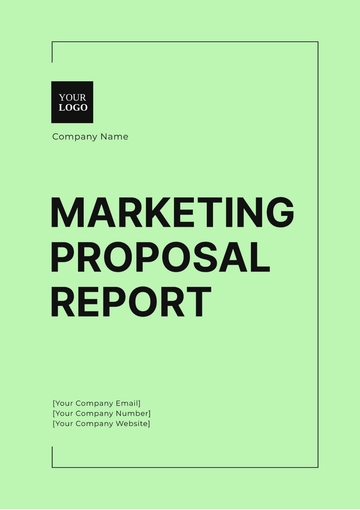Free Blank Email Marketing Proposal
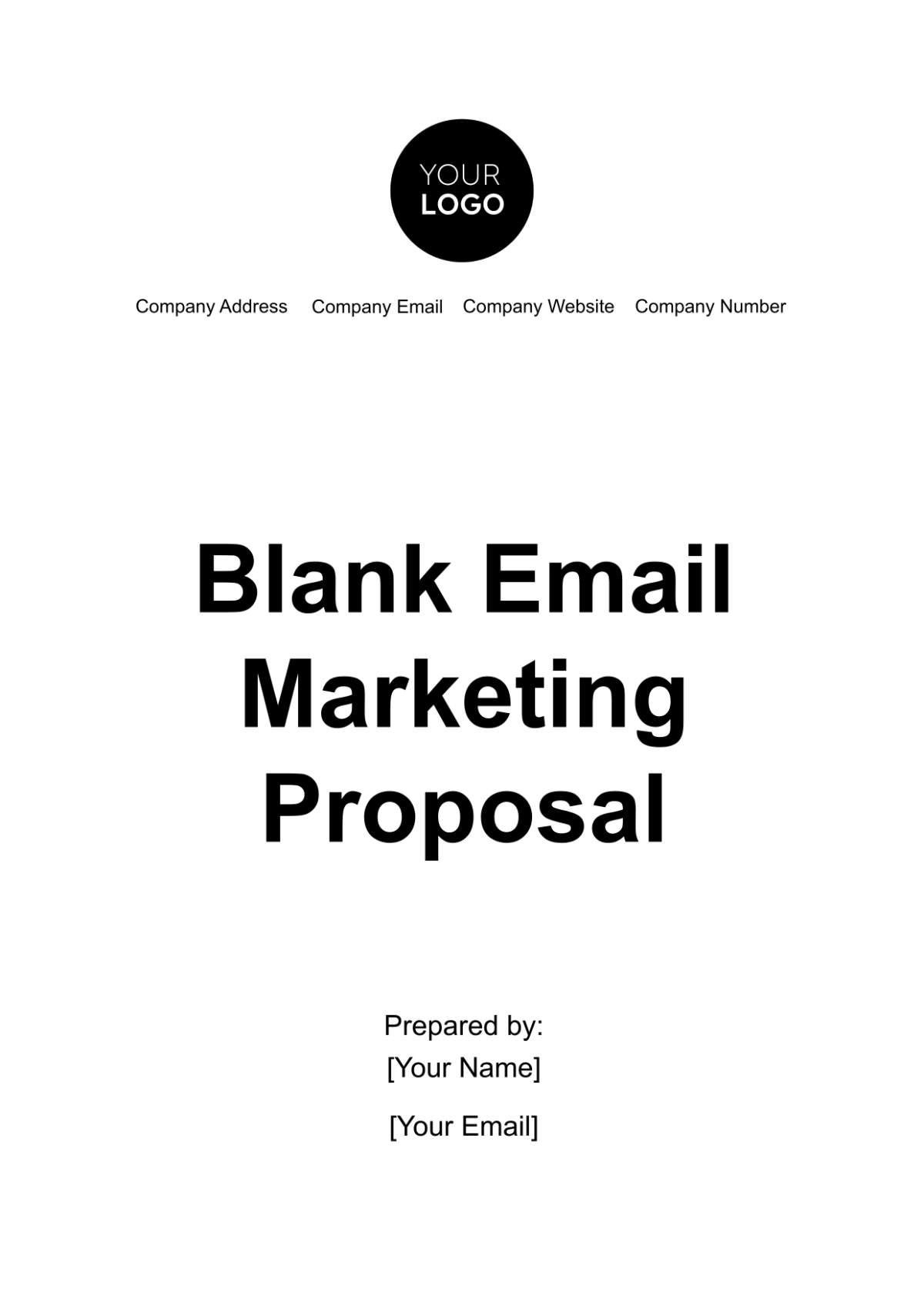
I. Executive Summary
A. Overview of the Proposal
(Briefly describe the purpose of the proposal, including the goals and objectives of the email marketing campaign. Mention the scope of the proposal and how it aligns with the client's overall marketing strategy.)
B. Key Benefits
(Outline the main benefits the client will gain from the proposed email marketing campaign. Include how the campaign will address specific needs or pain points of the client.)
C. Summary of Key Deliverables
(Provide a concise summary of what the client will receive from the email marketing campaign. List the primary deliverables, such as campaign setup, content creation, audience segmentation, and performance reporting.)
II. Background and Objectives
A. Company Overview
(Provide a detailed overview of [Your Company Name], including its history, mission, and core services. Explain why [Your Company Name] is well-suited to execute the proposed email marketing campaign.)
B. Client Background
(Describe the client’s business, including their industry, target audience, and current marketing efforts. Explain any relevant background information that provides context for the proposal.)
C. Campaign Objectives
(Clearly define the objectives of the email marketing campaign. These objectives should be specific, measurable, achievable, relevant, and time-bound (SMART). Explain how achieving these objectives will benefit the client.)
III. Strategy and Approach
A. Target Audience
(Detail the target audience for the email marketing campaign. Include demographic information, interests, and behavior patterns. Explain how the campaign will address the needs and preferences of this audience.)
B. Email Campaign Strategy
(Describe the overall strategy for the email campaign. This includes the types of emails that will be sent (e.g., newsletters, promotional offers, product updates), the frequency of emails, and any segmentation strategies.)
C. Content Plan
(Outline the plan for creating email content. Describe the types of content that will be used (e.g., text, images, videos), the tone and style of the content, and how it will engage the target audience.)
D. Design and Layout
(Explain the design and layout strategy for the email templates. Include details about branding, visual elements, and how the design will enhance the user experience and engagement.)
E. Technical Setup
(Provide information on the technical setup required for the email marketing campaign. This includes email list management, email automation tools, and integration with the client’s existing systems.)
IV. Execution Plan
A. Project Timeline
(Outline the timeline for the execution of the email marketing campaign. Include key milestones, deadlines for deliverables, and any dependencies.)
B. Roles and Responsibilities
(Define the roles and responsibilities of both [Your Company Name] and the client in the execution of the campaign. Include who will handle content creation, design, technical setup, and performance monitoring.)
C. Budget and Costs
(Break down the budget for the email marketing campaign. Include costs for content creation, design, technology, and any additional services. Provide a detailed cost estimate and explain how the budget aligns with the proposed strategy.)
D. Quality Assurance
(Describe the quality assurance process to ensure the email marketing campaign meets the required standards. This includes testing, review procedures, and any measures taken to ensure accuracy and effectiveness.)
V. Monitoring and Reporting
A. Performance Metrics
(Define the key performance indicators (KPIs) that will be used to measure the success of the email marketing campaign. Include metrics such as open rates, click-through rates, conversion rates, and overall ROI.)
B. Reporting Schedule
(Outline the schedule for reporting on the campaign’s performance. Include the frequency of reports, the format of the reports, and what information will be included in each report.)
C. Analysis and Recommendations
(Describe the process for analyzing the performance data and making recommendations for improvements. Include how insights will be used to optimize future campaigns.)
VI. Case Studies and References
A. Relevant Case Studies
(Provide case studies of similar email marketing campaigns executed by [Your Company Name]. Include details on the objectives, strategies, and results achieved in these campaigns.)
B. Client References
(List references from previous clients who can vouch for [Your Company Name]’s expertise and effectiveness in email marketing. Include contact information and a brief description of the projects worked on.)
VII. Terms and Conditions
A. Agreement Terms
(Outline the terms of the agreement between [Your Company Name] and the client. Include details on the scope of work, deliverables, payment terms, and any other contractual obligations.)
B. Confidentiality and Data Protection
(Describe the measures taken to protect the client’s data and ensure confidentiality. Include any policies related to data security and privacy.)
C. Termination Clause
(Provide information on the conditions under which either party can terminate the agreement. Include any notice periods, termination fees, and responsibilities upon termination.)
VIII. Conclusion
A. Summary of Proposal
(Reiterate the key points of the proposal, including the objectives, strategy, and benefits. Emphasize why [Your Company Name] is the right choice for the email marketing campaign.)
B. Next Steps
(Outline the next steps for moving forward with the proposal. Include how to proceed with approval, any initial meetings or discussions required, and how to contact [Your Company Name] for further information.)
IX. Appendices
A. Appendix A: Glossary of Terms
(Provide a glossary of terms used in the proposal to ensure that all technical language and jargon are clearly understood by the client.)
B. Appendix B: Additional Resources
(Include any additional resources or references that may be helpful for the client. This could include industry reports, articles, or guides related to email marketing.)
C. Appendix C: Template Samples
(Provide samples of email templates or content that will be used in the campaign. This will give the client an idea of the design and content style.)
- 100% Customizable, free editor
- Access 1 Million+ Templates, photo’s & graphics
- Download or share as a template
- Click and replace photos, graphics, text, backgrounds
- Resize, crop, AI write & more
- Access advanced editor
Design effective email campaigns with the Blank Email Marketing Proposal Template from Template.net. This editable template provides a flexible framework for outlining email marketing strategies and objectives. Use our Ai Editor Tool to customize the proposal, presenting a tailored email marketing plan that meets your business needs.
You may also like
- Business Proposal
- Research Proposal
- Proposal Request
- Project Proposal
- Grant Proposal
- Photography Proposal
- Job Proposal
- Budget Proposal
- Marketing Proposal
- Branding Proposal
- Advertising Proposal
- Sales Proposal
- Startup Proposal
- Event Proposal
- Creative Proposal
- Restaurant Proposal
- Blank Proposal
- One Page Proposal
- Proposal Report
- IT Proposal
- Non Profit Proposal
- Training Proposal
- Construction Proposal
- School Proposal
- Cleaning Proposal
- Contract Proposal
- HR Proposal
- Travel Agency Proposal
- Small Business Proposal
- Investment Proposal
- Bid Proposal
- Retail Business Proposal
- Sponsorship Proposal
- Academic Proposal
- Partnership Proposal
- Work Proposal
- Agency Proposal
- University Proposal
- Accounting Proposal
- Real Estate Proposal
- Hotel Proposal
- Product Proposal
- Advertising Agency Proposal
- Development Proposal
- Loan Proposal
- Website Proposal
- Nursing Home Proposal
- Financial Proposal
- Salon Proposal
- Freelancer Proposal
- Funding Proposal
- Work from Home Proposal
- Company Proposal
- Consulting Proposal
- Educational Proposal
- Construction Bid Proposal
- Interior Design Proposal
- New Product Proposal
- Sports Proposal
- Corporate Proposal
- Food Proposal
- Property Proposal
- Maintenance Proposal
- Purchase Proposal
- Rental Proposal
- Recruitment Proposal
- Social Media Proposal
- Travel Proposal
- Trip Proposal
- Software Proposal
- Conference Proposal
- Graphic Design Proposal
- Law Firm Proposal
- Medical Proposal
- Music Proposal
- Pricing Proposal
- SEO Proposal
- Strategy Proposal
- Technical Proposal
- Coaching Proposal
- Ecommerce Proposal
- Fundraising Proposal
- Landscaping Proposal
- Charity Proposal
- Contractor Proposal
- Exhibition Proposal
- Art Proposal
- Mobile Proposal
- Equipment Proposal
- Student Proposal
- Engineering Proposal
- Business Proposal

